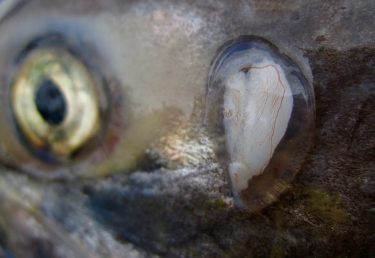
The new study led by the University of Washington shows that analyzing the ear stone — called an otolith — of wild Sockeye Salmon in Alaska reveals how key salmon habitat shifts year-to-year.
Published in Science on May 23, the study suggests that different parts of the watershed are hot spots for salmon production and growth. These favorable locations change year-to-year depending on climate conditions and their impacts on local landscapes, which affects the value of the habitats.
“We found that the areas where fish are born and grow flicker on and off each year in terms of productivity,” said lead author Sean Brennan, a postdoctoral researcher at the UW School of Aquatic and Fishery Sciences.
The research team reconstructed the likely geographic locations of nearly 1,400 adult salmon, from their birth in a Nushagak stream until they migrated to the ocean. By looking at each fish’s otolith — which accumulates layers as the animal grows — researchers could tell where the fish lived by matching the chemical signatures imprinted on each “growth ring” of the otolith with the chemical signatures of the water in which they swam.
Read more at UW News »
